Beervana: Craft Beer tasting guide
Beervana, a mecca for the country’s best brewers and biggest beer fans, welcomes devoted pilgrims to wellington in August. Liquorland is proud to once again sponsor New Zealand’s most popular and highly regarded showpiece for our craft brewers. And, as it’s never too early to start planning, here Michael Donaldson offers up a preview of some of the beers and brands we recommend you check out categorised according to our tasting guide.
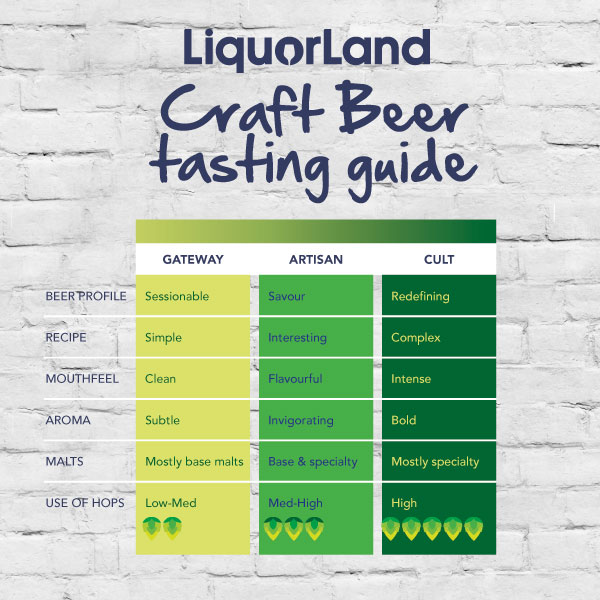
Michael Donaldson is current Brewers Guild Beer Writer of the Year. He is the author of Beer Nation - the Art and Heart of Kiwi Beer and his regular Pint of View column appears in the Sunday Star-Times
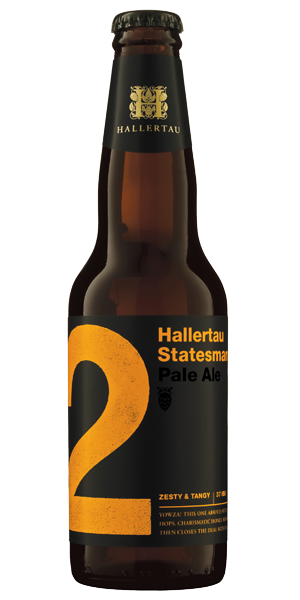
HALLERTAU NO 2
Gateway
The brewery: Husband and wife team Steve and Hayley Plowman stumbled in to beer. Steve was working in West Australia when he spied a brewery course in Margaret River and thought it would be just the thing to take his home brew to the next level. In 2005, back in New Zealand, they headed to the west Auckland hinterland and set up Hallertau brewpub in Huapai, a rural town at the end of the Northwest motorway. With a shiny new brewery just installed they now share the brewing hardware with Liberty Brewing, which has relocated from New Plymouth.
The brew: Hallertau’s core and original range are numbered 1, 2, 3 and 4; a throwback to an era when they couldn’t decide on names for the new brews. Hallertau No 2 is now also known as Statesman, a spicy pale ale with loads of citrus tang but not so bursting with hops that it will frighten the horses. It has a honey malt undertone that’s perfectly in harmony with the hop bitterness making it an easy drinking pale ale.
MOA PALE ALE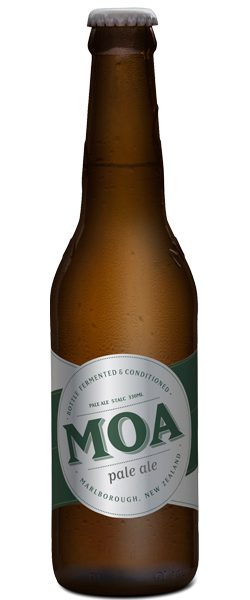
Gateway
The brewery: Thanks to an audacious share float and some “out- there” marketing techniques, Moa has become one of New Zealand’s best known and more mainstream craft breweries. The brewery was started by Josh Scott, a trained winemaker keen on cross-pollination of ideas, such as using champagne yeasts in some of his beers. The business was taken over by the folks behind 42 Below Vodka who created a real storm when the brewery was launched on the sharemarket in early 2013. After a flurry of activity which initially spiked the share price to a $1.32, the company was hit by poor sales and the shares almost halved in value to 62c in August. But it seems as if a change of distributor has ensured their great range of well-made beers are finding new audiences and the price is edging back up.The brew: Moa Pale Ale is a classic Kiwi rendition of the popular style. It uses New Zealand hops to create a lovely citrus and floral nose and a punchy bitterness that doesn’t detract from the fleshy malt base. This beer is bottle-conditioned, which means the yeast residue is still in the bottle. It also means, depending on how the beer has been stored, it may change character as the yeast will be still active at room temperature. When you pour it from the bottle be careful to leave yeast sediment behind
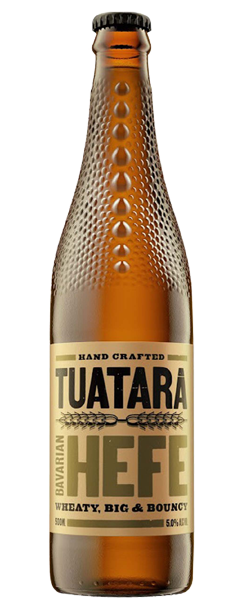
TUATARA HEFE
?Gateway
The brewery: When Carl Vasta started Tuatara on a lifestyle block in the hills above Waikanae on the Kapiti Coast north of Wellington, his attitude was whatever beer he didn’t sell he’d drink. Good luck doing that now because Tuatara is one of the country’s biggest craft producers. Vasta, with partner Sean Murrie, started small and developed something of a cult following around Wellington for his perfectly- formed, classically-derived styles. When the brewery got too big for its boots – or at least too big for the out-of- the-way property on the hill – they moved it down to the flat in Paraparaumu, where they churn out about a million litres of beer every year.
The brew: Wheat beers come in all sorts of guises but in Germany they are known as Weissbier or Weizenbeer – except when they are unfiltered when they become known as Hefeweizen. So that’s where the name Tuatara
Hefe comes from – it’s an unfiltered wheat beer, which means there’s traces of yeast sediment in the beer. This is not a bad thing; in fact many people will argue the yeast
is good for you. If you gently tilt the bottle before pouring the yeast will make the beer cloudy but won’t harm the taste. What you’ll get is some banana, a hint of bubblegum and pinch of clove – the essence of a true wheat beer.
YEASTIE BOYS GUNNAMATTA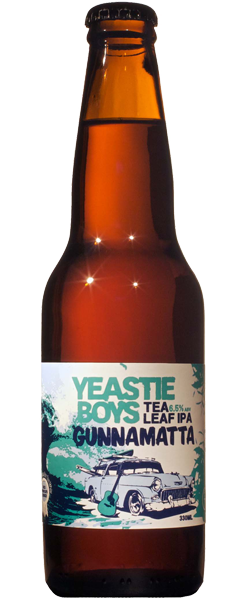 ?
?
?Artisan
The brewery: Yeastie Boys are Stu McKinlay and Sam Possenniskie, a couple of mates who came up with the idea of a brewery when they realised Stu’s home brew was so good people would be prepared to pay money for it. Not having the up-front cash for a brewery and uncertain whether they’d succeed, they ventured to Invercargill where brewer Steve Nally was just starting his contract brewing business. They did a small, 1200 litre, first- up brew of their iconic Pot Kettle Black and never looked back. Stu is a mastermind of unusual and experimental beers exemplified by his incredible but divisive Rex Attitude, a beer made with 100 per cent peat – smoked malt that tastes like whisky.
The brew: Gunnamatta is one of those beers that transports you to another place. Rebelling against a trend to add coffee to beer, Yeastie Boys decided to add tea – in this case Earl Grey. It’s a perfectly clever idea because Earl Grey is laced with bergamot which adds a citrus fragrance that you can get from hops and the tannin in the tea gives a bittering effect as well. But this is so much more than a cuppa tea stirred into a beer. And the name? It’s a surf break on Victoria’s Mornington Peninsula, and a song instrumental by Australian musical legend Paul Kelly.
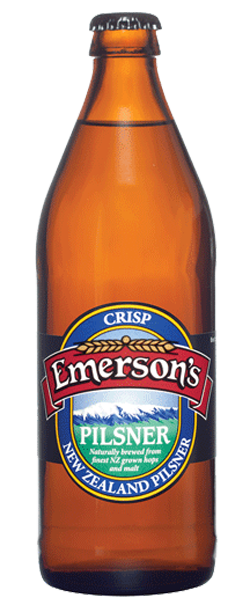
EMERSON'S PILSNER
Gatweway
?The brewery: Richard Emerson’s iconic Dunedin brewery is 22 years old this year and what a remarkable story. Richard was born deaf after his mother contracted German measles while she was pregnant but his disability means nothing when it comes to making great beer. Richard believes his body’s way of compensating for his deafness is to give him a sense of taste and smell superior to most people’s. A young Emerson fell in love with real beer while on a holiday in Europe and returned to New Zealand to start his own brewery with the backing of his family and a handful of friends. For years, the brewery was nothing more than Dunedin’s best-kept secret but the beers soon became too good for word not to get around. While the brewery is tiny by modern standards, the crew at Emerson’s never miss a beat and every classic brew that leaves the premises is among the best examples of its kind.
The brew: Emerson’s Pilsner is a classic New Zealand take on the world’s most popular beer style. Pilsner originated in the Czech town of Pils and the style is represented today by the likes of Heineken, Stella Artois, Carlsberg and Steinlager. But down in New Zealand we do it differently, because we have such amazing hops that the rest of the world doesn’t. A traditional pilsner has that crackling bitterness but the aroma doesn’t necessarily jump out of the glass. New Zealand hops, however, have a wonderful aroma of citrus, passionfruit and lychee and that’s what you get with this beautiful summer-in-a-glass brew. A frothy head of white and a wonderful aroma are backed by bracing bitterness and firm malt backbone.
BACH BREWING HOPSMACKER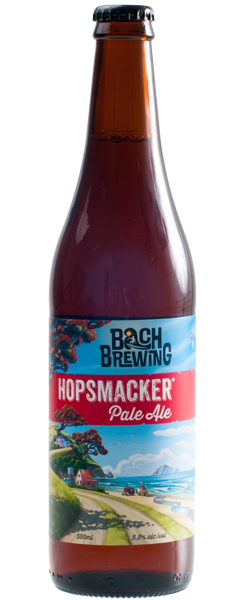
Artisan
The brewery: Bach Brewing is a reincarnation of one of
New Zealand’s early craft pioneer breweries. In 1999 a small brewery started in Hawke’s Bay called Limburg. The brewer was Chris O’Leary, who went on to make his name as the head brewer at Emerson’s in Dunedin. His partner in the business was Craig Cooper. While the original Limburg failed in 2008 – it was a bit ahead of its time in the second wave
of Kiwi craft brewing – Cooper has decided to jump back into the brewing game and revitalise Limburg’s most famous beers under the Bach Brewing brand.
The brew: Hopsmacker is a reworked version of a Limburg original, which won the champion pale ale award at the brewing industry’s annual awards in 2003 and 2004. Then, while the industry recognised the quality of the beer it was probably ahead of the market as New Zealand wasn’t really ready for a “new world” pale ale bursting with fragrant hops. Now we are and Hopsmacker doesn’t disappoint. Full of the New Zealand Riwaka hops with their grapefruit zestiness and the spice of US Cascade this beer bursts with flavour. Perfect for the end of the day at the beach.
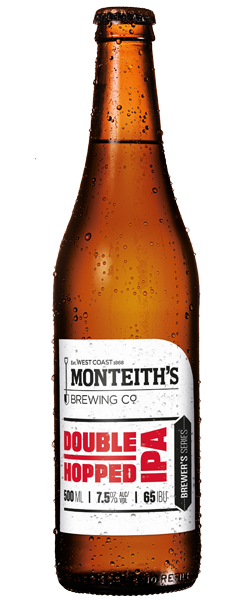
MONTEITH'S DOUBLE HOPPED IPA
Artisan
The brewery: Stuart Monteith left Ireland for the Central Otago goldfields armed with a brewing recipe and a reputation for trouble. When he was arrested for not having a licence and fined six pounds, he refused to pay and ran away to the West Coast where he took over the Phoenix Brewery in Reefton. The brewery bore his name until 1927 when it amalgamated with others in the area to form Westland Breweries, headed by Stuart’s son, William. DB took over Westland Breweries in 1969 and when, in the mid-1990s they decided to rebrand the brewery to anchor it in the region, they chose the name Monteith’s.
The brew: When the brewery was refurbished in 2012 (it’s a must-visit in a quite spectacular setting), it was decided to focus the Greymouth operation on making a “Brewer’s Series” of craft beer. The Double Hopped IPA is a gruntier version of the popular IPA but while it’s a big beer it’s not the hop bomb that a lot of other craft brewers produce and it’s a tasty beer with a citrus and pine hop oomph. At 7.5 per cent it’s not quaffable but the alcohol doesn’t overpower the malt richness and hop bitterness.
8-WIRED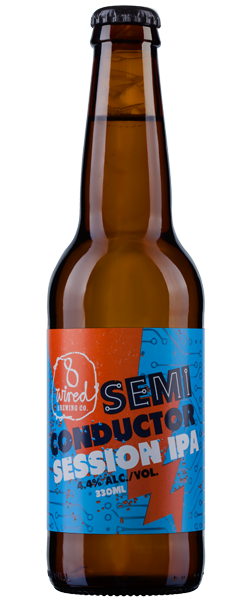
Artisan
The brewery: Dane Soren Eriksen could have made his living as a professional poker player, having been good enough to win a New Zealand poker championship a few years back; but it’s to the benefit of the beer-loving public that he took his poker winnings to invest in his wonderfully named 8-Wired brewery. Initially, after working as a brewer for Renaissance in Blenheim, he rented space in the same brewery to start making his own beer. Soren pushes the boundaries on everything he does – if there’s hops, there’s lots of hops; if there’s alcohol, there’s lots of alcohol. But everything is about flavour and with 8-Wired there is always lots of flavour.
The brew: One of 8-Wired’s most popular beers is the hop-packed, high-octane Superconductor, an 8.8 per cent double IPA. But like many brewers, there’s a realisation that while people want a lot of taste sometimes they’d prefer a little less alcohol in order to savour the flavour for longer without falling off their barstools. Hence Semiconductor, the pint-size half- brother to Superconductor that has half the alcohol (4.4 per cent) but the same amount of wonderful hop aroma. It’s a hard job to tonedown a beer like this without sacrificing flavour and mouthfeel but Eriksen has managed to perfect it.
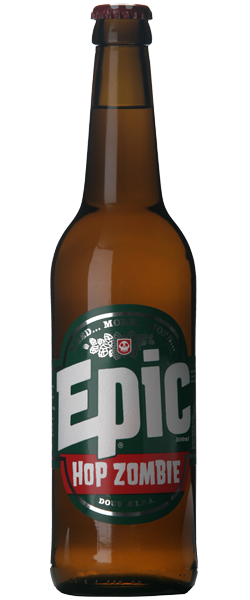
EPIC HOP ZOMBIE
Cult
The brewery:Brewer Luke Nicholas started out at the gone-but-not-forgotten Cock and Bull chain in Auckland and when a chance came to branch out on his own under the Epic label eight years ago he grabbed it. His beer is made under contract at Steam Brewery in Auckland. Nicholas is an unabashed hophead and churns out as much of his hop-driven, American-style, big IPAs as the market wants. Nicholas has defined the art of making American West Coast-style IPAs and favours American hops for his challenging styles.
The brew: Hop Zombie, despite its name, is not terrifying – it’s delectable. But be warned, if you drink too much of this brilliantly balanced beer there’s every chance you could resemble the walking dead. This monster clocks in at 8.5 per cent alcohol and is jam-packed with an oily hop resin and malt sweetness that gives a perfect mouthfeel. With an alluring aroma of guava and passionfruit on the nose, all the components are perfectly weighted, making this beer dangerously drinkable. Plus it has a dark secret: brewer Nicholas refuses to reveal the “mystery” hops that go in to this beer, with the label simply stating “classified”.
GARAGE PROJECT DEATH FROM ABOVE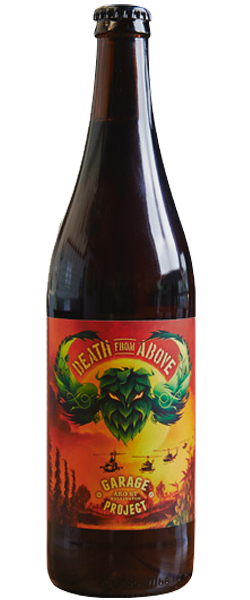
Cult
The brewery: Probably New Zealand’s most innovative and hip brewery, Garage Project got its name because it started out life as an experimental outfit brewing 50 litre batches of beer in a garage. When brewer Pete Gillespie, former game-designer Jos Ruffell and Pete’s brother Ian created the brewery, they decided they’d do things differently. Eventually they found an old petrol station (another garage) on Aro St in Wellington and converted it in to a brewery. No matter how much beer these guys make, the demand is always greater and they are such a drawcard at Beervana that last year they had two stalls.
The brew: Death From Above is the kind of magic that makes Garage Project stand out from the crowd. It riffs off Vietnamese cuisine – in particular mango- chilli salad – so contains mint, chilli, mango and lime juice as well as the normal regimen of hops and malt. It could have gone pear-shaped adding all those unusual ingredients into a beer but the balance is spot on and the chilli heat in particular just licks at your palate. It’s fragrant, refreshing and brilliantly designed – much like the stunning label.
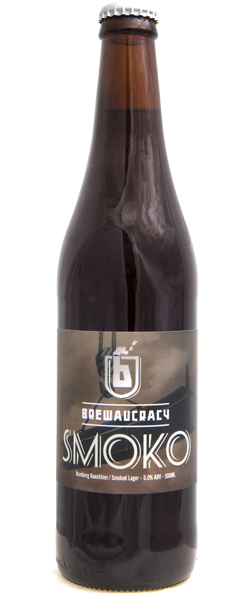
BREWAUCRACY SMOKO
?Cult
The brewery: This is perhaps the hardest name in all of brewing to pronounce and it’s not easy to spell either. The name hints at co-founder Greig McGill’s antipathy to regulation and red tape. McGill and business partner Phil Murray “rent” brewery space at a small operation called Shunter’s Yard on the outskirts of Hamilton. Shunter’s Yard, complete with a couple of railway carriages and an olde worlde bar is a unique operation built by a couple of blokes with backgrounds in mechanical engineering and dairy production, who used Kiwi ingenuity to fashion a brewery from some unlikely equipment.
The brew: Smoked beers are popping up more often around New Zealand with a handful of breweries trying their hand at this traditional German style. Historically all ancient beer would have had a hint of smoke behind it as the only way to dry grain in pre-industrial times was either in the sun or using a wood fire. The wood-fire process was kept alive in Bamberg, where beer made with the beechwood smoked malt, known as rachmalt, to produce Rauchbier (pronounced “rowkbeer”). Brewaucracy use traditional beechwood to get that lovely bacon aroma while the beer has residual sweetness that adds another layer of complexity.
STOKE BISCUIT LAGER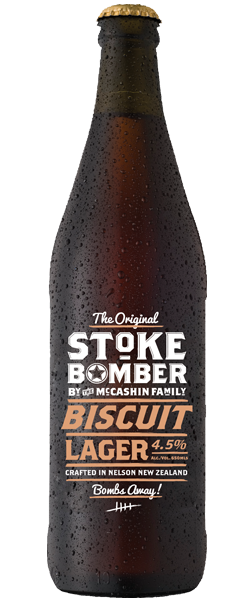
Artisan
The brewery: The Stoke Brewery is one of the most famed in New Zealand because it was here the first true craft brewery was born out of an old cider factory, with founder and owner Terry McCashin determined to break the Lion-DB duoply. In 1981, when the brewery was opened by then prime minister Robert Muldoon, no-one expected Mac’s Real Ales were going to cut it against the big boys. There were times the start-up brewery was against the wall and looking like failure but each time, former All Black McCashin did enough to keep his head above water. When Mac’s was bought by Lion Breweries in 1999, the brewery in Stoke, on the outskirts of Nelson, kept operating though it was leased to Lion for the production of Mac’s. When Lion walked away from the lease, the McCashin family was left with an idle brewery; so what else was there to do but start up another operation.
The brew: Stoke Biscuit Lager is a slight twist on the usual lager. First the colour. While we’re used to light hay-coloured lagers (think Steinlager) and the odd dark lager (think Speight’s Dark) there are very few brown lagers. But lager is defined by the yeast and the temperature at which it ferments, less so by the malt. In this case some toasty- caramel malt gives a rich warm base with quite a lot of residual sweetness, overlaid by some zesty and fruity hops, to give a crisp finish.



